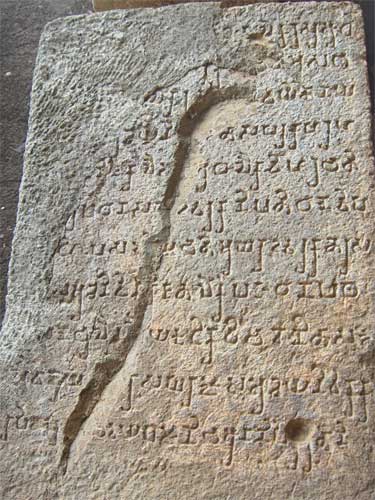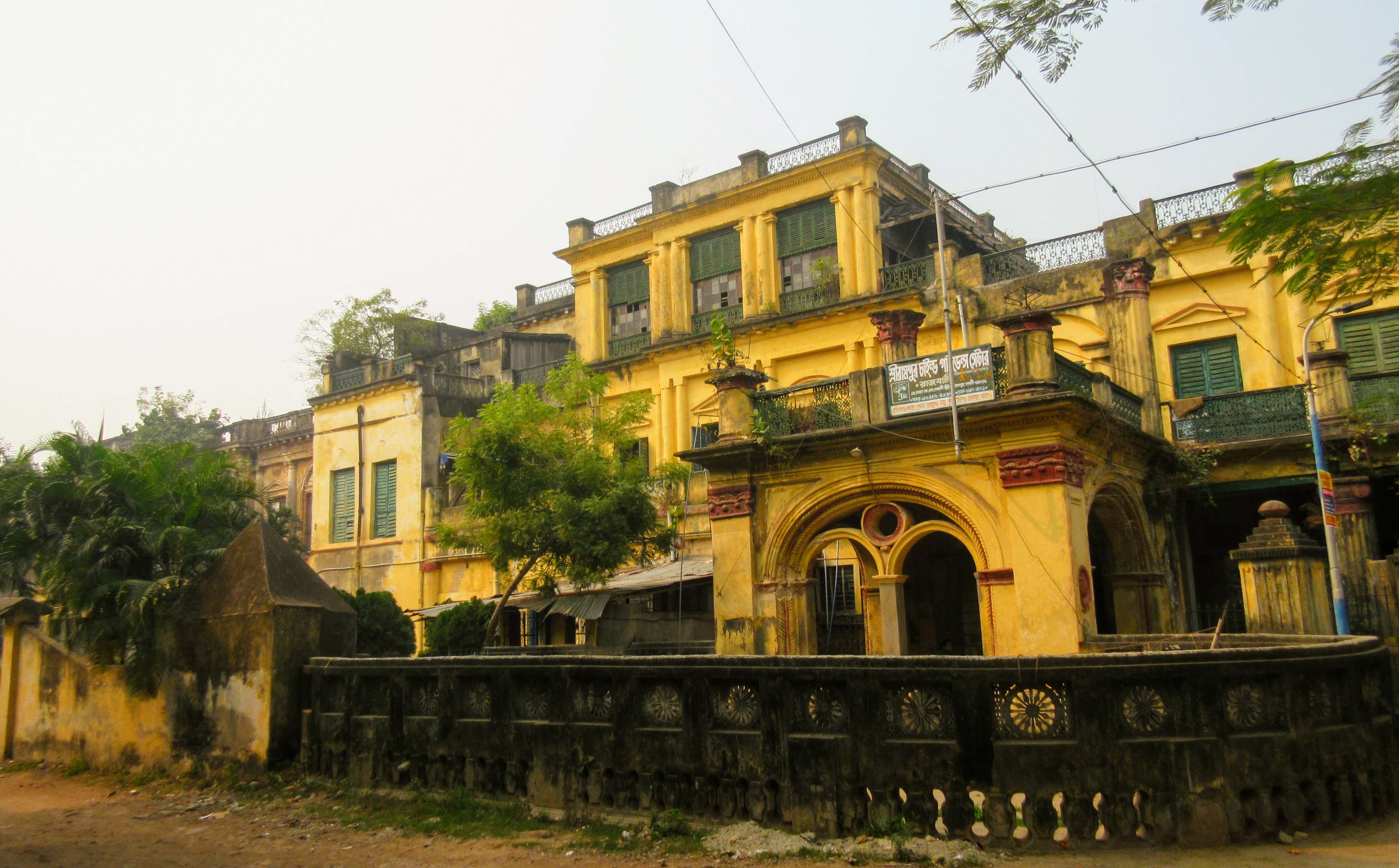|
Amara Sinha
Amarasimha (IAST: , ) was a Sanskrit grammarian and poet from ancient India, of whose personal history hardly anything is known. He is said to have been "one of the nine gems that adorned the throne of Vikramaditya," and according to the evidence of Xuanzang, this is the Chandragupta Vikramaditya (Chandragupta II) who flourished about CE 375.''Amarakosha'' compiled by B. L. Rice, edited by N. Balasubramanya, 1970, page X Other sources describe him as belonging to the period of Vikramaditya of 7th century."Amara-Simha" in '' Chambers's Encyclopædia''. London: George Newnes, 1961, Vol. 1, p. 311. Most of Amarasiṃha's works were lost, with the exception of the celebrated '' Amara-Kosha'' (IAST: ') (''Treasury of Amara''). The first reliable mention of the ''Amarakosha'' is in the Amoghavritti of Shakatayana composed during the reign of Amoghavarsha (814-867 CE) The ''Amarakosha'' is a lexicon of Sanskrit words in three books, and hence is sometimes called the ''Trikāṇḍī ... [...More Info...] [...Related Items...] OR: [Wikipedia] [Google] [Baidu] |
Amarakosha
The Amarakosha (Devanagari: अमरकोशः, IAST: ''Amarakośaḥ'', ISO 15919, ISO: ''Amarakōśaḥ'') is the popular name for ''Namalinganushasanam'' (Devanagari: नामलिङ्गानुशासनम्, IAST: ''Nāmaliṅgānuśāsanam'', ISO 15919, ISO: ''Nāmaliṅgānuśāsanam'', which means "instruction concerning nouns and gender") a thesaurus in Sanskrit written by the ancient Indian scholar Amarasimha. The name Amarakosha derives from the Sanskrit words ''amara'' ("immortal") and ''kosha'' ("treasure, casket, pail, collection, dictionary"). According to Arthur Berriedale Keith, this is one of the oldest extant Sanskrit lexicons (kosha). According to Keith, Amarasiṃha, who possibly flourished in the 6th century, " knew the Mahayana, Mahāyāna and used Kalidasa, Kālidāsa." The author himself mentions 18 prior works, but they have all been lost. There have been more than 40 commentaries on the ''Amarakosha''. Author Amarasimha is said to have ... [...More Info...] [...Related Items...] OR: [Wikipedia] [Google] [Baidu] |
Motilal Banarsidass
Motilal Banarsidass Publishing House (MLBD) is an Indian academic publishing house, founded in Delhi, India in 1903. It publishes and distributes serials, monographs, and scholarly publications on Asian religions, Buddhology, Indology, Eastern philosophy, history, culture, arts, architecture, archaeology, language, literature, linguistics, musicology, mysticism, yoga, tantra, occult, medicine, astronomy, and astrology. Amongst its publications are the 100 volumes of the Mahapuranas; the 50 volumes of the '' Sacred Books of the East'', edited by Max Müller; ''Bibliotheca Buddhica'' (30 volumes in 32 pts); Ramcharitmanas with Hindi and English translations; the Manusmriti in 10 volumes and the Sanskrit lexicon; and the 7 volumes of ''Encyclopedia of Indian Philosophies''. It also brings out books based on research and study conducted at organizations such as the Indian Council of Historical Research (ICHR), Indira Gandhi National Centre for the Arts (IGNCA), and Indian Cou ... [...More Info...] [...Related Items...] OR: [Wikipedia] [Google] [Baidu] |
Year Of Birth Unknown
A year is a unit of time based on how long it takes the Earth to orbit the Sun. In scientific use, the tropical year (approximately 365 solar days, 5 hours, 48 minutes, 45 seconds) and the sidereal year (about 20 minutes longer) are more exact. The modern calendar year, as reckoned according to the Gregorian calendar, approximates the tropical year by using a system of leap years. The term 'year' is also used to indicate other periods of roughly similar duration, such as the lunar year (a roughly 354-day cycle of twelve of the Moon's phasessee lunar calendar), as well as periods loosely associated with the calendar or astronomical year, such as the seasonal year, the fiscal year, the academic year, etc. Due to the Earth's axial tilt, the course of a year sees the passing of the seasons, marked by changes in weather, the hours of daylight, and, consequently, vegetation and soil fertility. In temperate and subpolar regions around the planet, four seasons ar ... [...More Info...] [...Related Items...] OR: [Wikipedia] [Google] [Baidu] |
4th-century Indian Poets
The 4th century was the time period from 301 CE (represented by the Roman numerals CCCI) to 400 CE (CD) in accordance with the Julian calendar. In the West, the early part of the century was shaped by Constantine the Great, who became the first Roman emperor to adopt Christianity. Gaining sole reign of the empire, he is also noted for re-establishing a single imperial capital, choosing the site of ancient Byzantium in 330 (over the current capitals, which had effectively been changed by Diocletian's reforms to Milan in the West, and Nicomedeia in the East) to build the city soon called Nova Roma (New Rome); it was later renamed Constantinople in his honor. The last emperor to control both the eastern and western halves of the empire was Theodosius I. As the century progressed after his death, it became increasingly apparent that the empire had changed in many ways since the time of Augustus. The two-emperor system originally established by Diocletian in the previous century fel ... [...More Info...] [...Related Items...] OR: [Wikipedia] [Google] [Baidu] |
Indian Male Poets
Indian or Indians may refer to: Associated with India * of or related to India ** Indian people ** Indian diaspora ** Languages of India ** Indian English, a dialect of the English language ** Indian cuisine Associated with indigenous peoples of the Americas * Indigenous peoples of the Americas ** First Nations in Canada ** Native Americans in the United States ** Indigenous peoples of the Caribbean ** Indigenous languages of the Americas Places * Indian, West Virginia, U.S. * The Indians, an archipelago of islets in the British Virgin Islands Arts and entertainment Film * ''Indian'' (film series), a Tamil-language film series ** ''Indian'' (1996 film) * ''Indian'' (2001 film), a Hindi-language film Music * Indians (musician), Danish singer Søren Løkke Juul * "The Indian", an unreleased song by Basshunter * "Indian" (song), by Sturm und Drang, 2007 * "Indians" (song), by Anthrax, 1987 * Indians, a song by Gojira from the 2003 album '' The Link'' Other uses ... [...More Info...] [...Related Items...] OR: [Wikipedia] [Google] [Baidu] |
Kannada Script
The Kannada script ( IAST: ''Kannaḍa lipi''; obsolete: Kanarese or Canarese script in English) is an abugida of the Brahmic family, used to write Kannada, one of the Dravidian languages of South India especially in the state of Karnataka. It is one of the official scripts of the Indian Republic. Kannada script is also widely used for writing Sanskrit texts in Karnataka. Several minor languages, such as Tulu, Konkani, Kodava, Beary and Sanketi also use alphabets based on the Kannada script. The Kannada and Telugu scripts share very high mutual intellegibility with each other, and are often considered to be regional variants of single script. Other scripts similar to Kannada script are Sinhala script (which included some elements from the Kadamba script), and Old Peguan script (used in Burma). The Kannada script ( ''akṣaramāle'' or ''varṇamāle'') is a phonemic abugida of forty-nine letters. The character set is almost identical to that of other Brahmic scripts ... [...More Info...] [...Related Items...] OR: [Wikipedia] [Google] [Baidu] |
Auguste-Louis-Armand Loiseleur-Deslongchamps
Auguste-Louis-Armand-Loiseleur Deslongchamps (or ALA Loiseleur-Deslongchamps) (14 August 1805 – 10 January 1840) was a French indologist. He was the second son of the botanist, Jean-Louis-Auguste Loiseleur-Deslongchamps. He is known for his translation of the Manusmriti and Amara Sinha's Amara-Kosha The Amarakosha (Devanagari: अमरकोशः, IAST: ''Amarakośaḥ'', ISO: ''Amarakōśaḥ'') is the popular name for ''Namalinganushasanam'' (Devanagari: नामलिङ्गानुशासनम्, IAST: ''Nāmaliṅgānuśāsan .... References French Indologists 1805 births 1840 deaths Translators from Sanskrit {{indology-stub ... [...More Info...] [...Related Items...] OR: [Wikipedia] [Google] [Baidu] |
Kolkata
Kolkata, also known as Calcutta ( its official name until 2001), is the capital and largest city of the Indian state of West Bengal. It lies on the eastern bank of the Hooghly River, west of the border with Bangladesh. It is the primary financial and commercial centre of eastern and northeastern India. Kolkata is the seventh most populous city in India with an estimated city proper population of 4.5 million (0.45 crore) while its metropolitan region Kolkata Metropolitan Area is the third most populous metropolitan region of India with a metro population of over 15 million (1.5 crore). Kolkata is regarded by many sources as the cultural capital of India and a historically and culturally significant city in the historic region of Bengal.————— The three villages that predated Calcutta were ruled by the Nawab of Bengal under Mughal suzerainty. After the Nawab granted the East India Company a trading license in 1690, the area was developed by ... [...More Info...] [...Related Items...] OR: [Wikipedia] [Google] [Baidu] |
Serampore
Serampore (also called Serampur, Srirampur, Srirampore, Shreerampur, Shreerampore, Shrirampur or Shrirampore) is a city in Hooghly district in the Indian state of West Bengal. It is the headquarters of the Srirampore subdivision. It is a part of the area covered by Kolkata Metropolitan Development Authority (KMDA). It is a pre-colonial city on the west bank of the Hooghly River. It was part of Danish India under the name Frederiknagore from 1755 to 1845. Geography Location Serampore is located at . The area consists of flat alluvium, alluvial plains, that form a part of the Gangetic Delta. This belt is highly industrialised. Police stations Serampore police station has jurisdiction over Serampore and Baidyabati Municipal areas, and parts of Sreerampur Uttarpara CD Block. Serampore Women police station has been set up. Urbanisation Srirampore subdivision is the most urbanized of the subdivisions in Hooghly district. 73.13% of the population in the subdivision is urban and ... [...More Info...] [...Related Items...] OR: [Wikipedia] [Google] [Baidu] |
Henry Thomas Colebrooke
Henry Thomas Colebrooke FRS FRSE FLS (15 June 1765 – 10 March 1837) was an English orientalist and botanist. He has been described as "the first great Sanskrit scholar in Europe". Biography Henry Thomas Colebrooke was born on 15 June 1765. His parents were Sir George Colebrooke, 2nd Baronet, MP for Arundel and Chairman of the East India Company from 1769, and Mary Gaynor, daughter and heir of Patrick Gaynor of Antigua. He was educated at home, and from the age of twelve to sixteen he lived in France. In 1782 Colebrooke was appointed through his father's influence to a writership with the East India Company in Calcutta. In 1786 and three years later he was appointed assistant collector in the revenue department at Tirhut. He wrote ''Remarks on the Husbandry and Commerce of Bengal'', which was privately published in 1795, by which time he had transferred to Purnia. This opposed the East India Company's monopoly on Indian trade, advocating instead for free trade be ... [...More Info...] [...Related Items...] OR: [Wikipedia] [Google] [Baidu] |
Rome
Rome (Italian language, Italian and , ) is the capital city and most populated (municipality) of Italy. It is also the administrative centre of the Lazio Regions of Italy, region and of the Metropolitan City of Rome. A special named with 2,746,984 residents in , Rome is the list of cities in the European Union by population within city limits, third most populous city in the European Union by population within city limits. The Metropolitan City of Rome Capital, with a population of 4,223,885 residents, is the most populous metropolitan cities of Italy, metropolitan city in Italy. Rome metropolitan area, Its metropolitan area is the third-most populous within Italy. Rome is located in the central-western portion of the Italian Peninsula, within Lazio (Latium), along the shores of the Tiber Valley. Vatican City (the smallest country in the world and headquarters of the worldwide Catholic Church under the governance of the Holy See) is an independent country inside the city boun ... [...More Info...] [...Related Items...] OR: [Wikipedia] [Google] [Baidu] |






